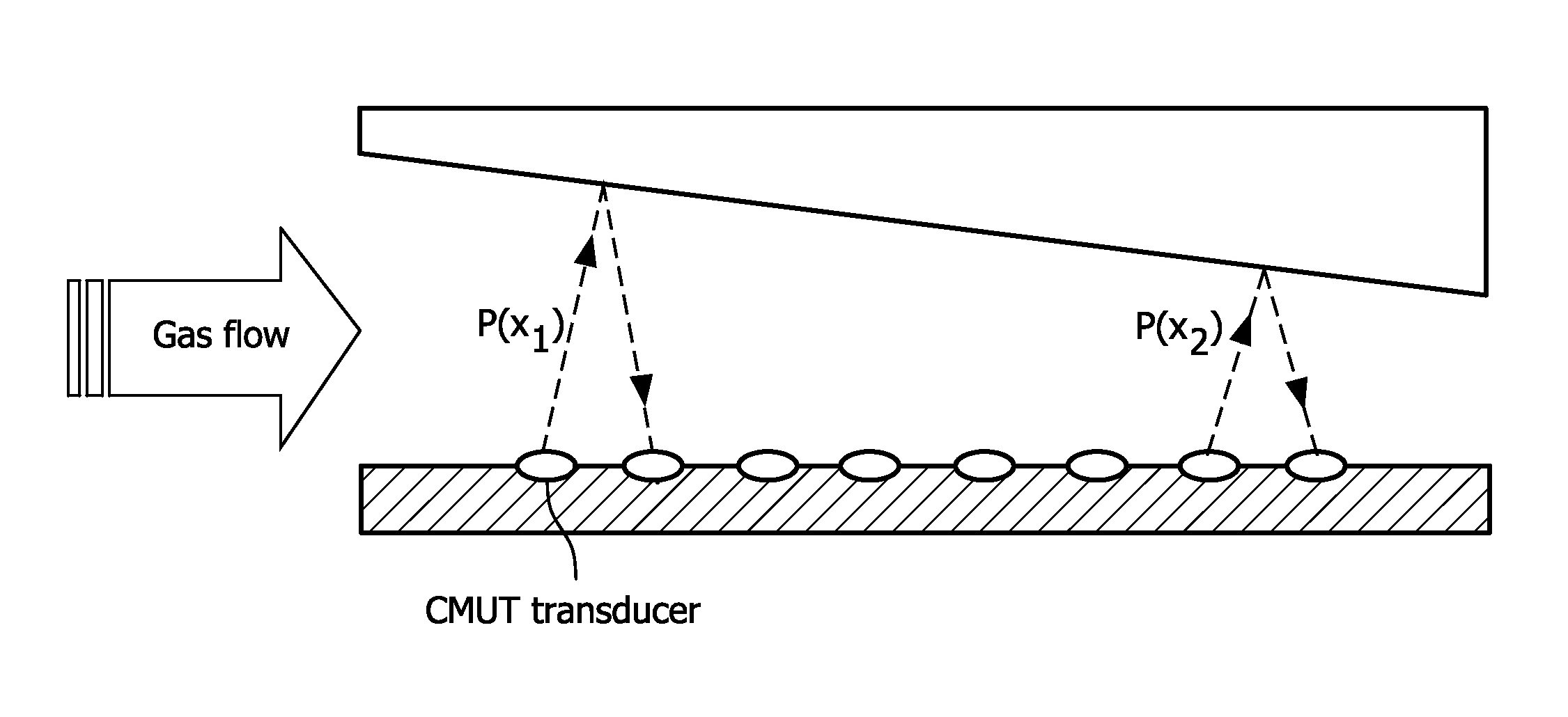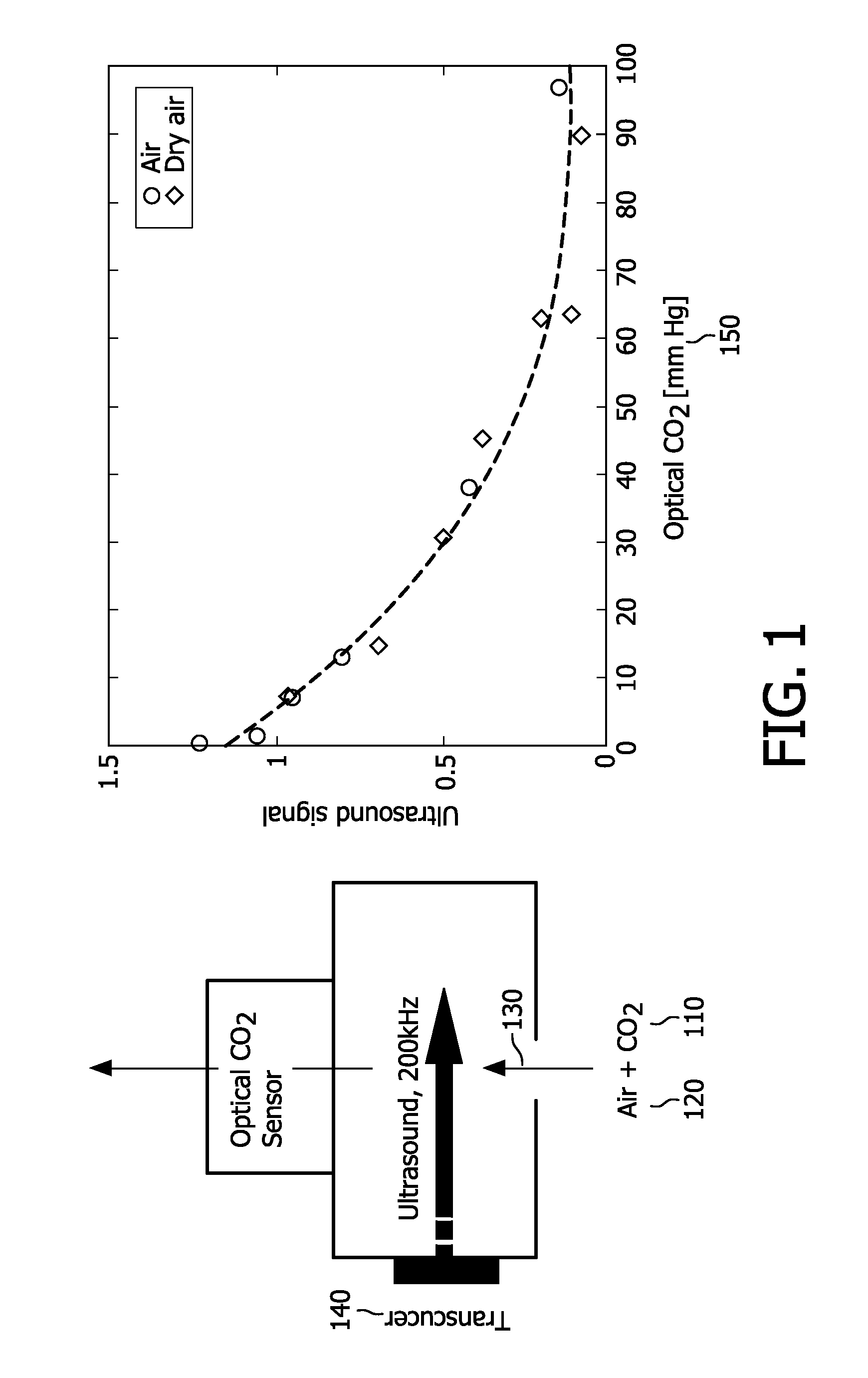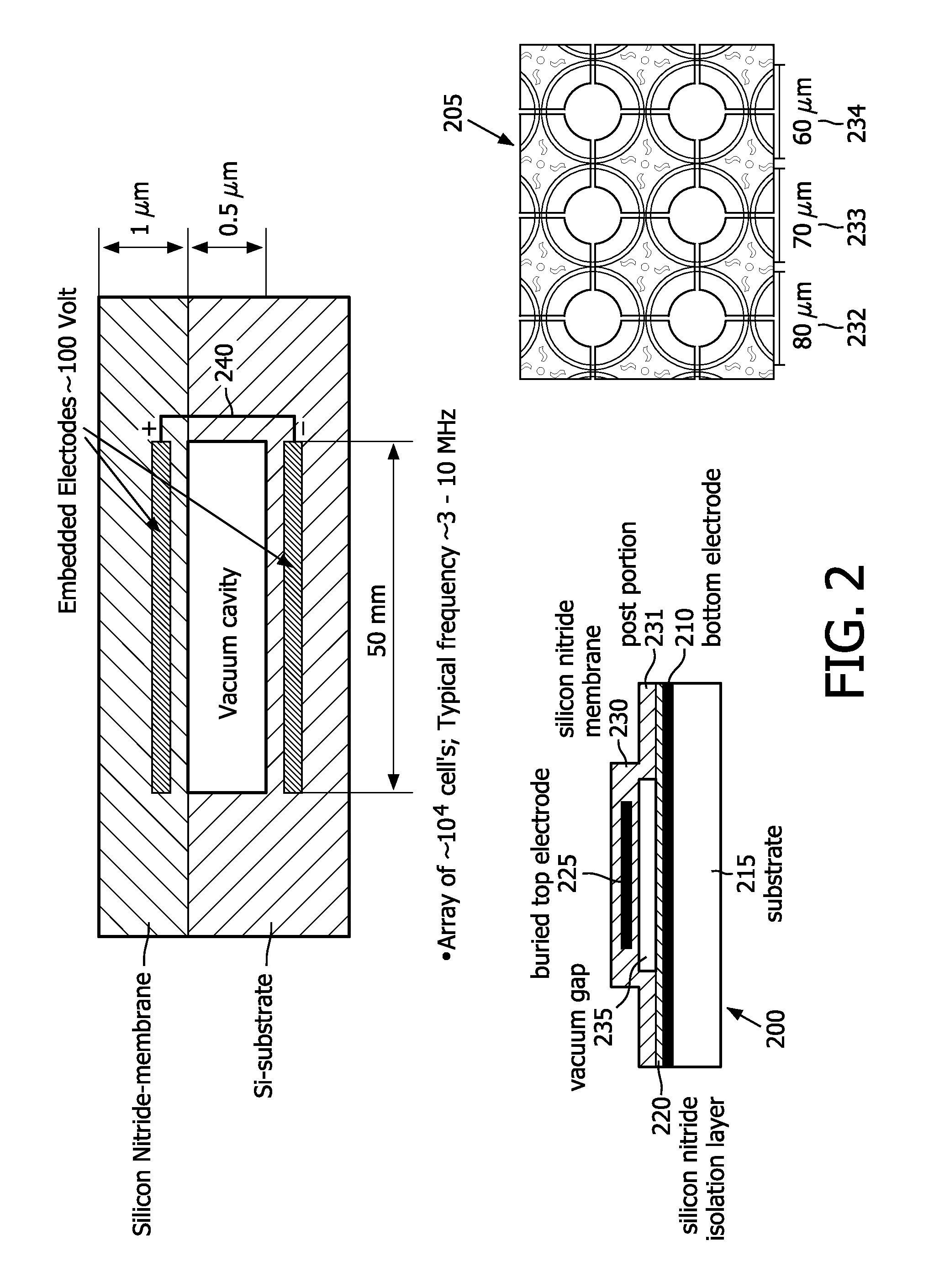Gas sensing using ultrasound
a technology of gas sensing and ultrasound, applied in the direction of instruments, chemical methods analysis, fluid analysis using sonic/ultrasonic/infrasonic waves, etc., can solve the problems of large problems, expensive and bulky systems, and difficult implementation, and achieve the effect of reducing the cost of using a single frequency and a huge problem
- Summary
- Abstract
- Description
- Claims
- Application Information
AI Technical Summary
Benefits of technology
Problems solved by technology
Method used
Image
Examples
Embodiment Construction
[0088]FIG. 1 depicts a conceptual and graphical comparison between optical and ultrasound approaches to capnography, in accordance with the present invention.
[0089]Carbon dioxide 110 absorbs IR (infrared) light of a specific wavelength, 4.3 nm. Because the amount of light absorbed is proportional to the concentration of the absorbing molecules, the CO2 concentration is determinable by comparing the measured absorbance with the absorbance of a known standard. The concentration is expressed as a partial pressure (of CO2) in mmHg.
[0090]In the ultrasound context, a gas, in particular CO2, has a characteristic absorption spectrum. It is noted that CO2 in air exhibits an absorption maximum between 20 kHz and 2 MHz. By recording the absorption spectrum, i.e., by recording the absorption coefficient of ultrasound versus the ultrasound frequency and by measuring sound speed, the components of a simple gas mixture and their concentrations can be determined Thus it is possible to determine the...
PUM
| Property | Measurement | Unit |
|---|---|---|
| frequency | aaaaa | aaaaa |
| wavelength | aaaaa | aaaaa |
| time-resolution | aaaaa | aaaaa |
Abstract
Description
Claims
Application Information
 Login to View More
Login to View More - R&D
- Intellectual Property
- Life Sciences
- Materials
- Tech Scout
- Unparalleled Data Quality
- Higher Quality Content
- 60% Fewer Hallucinations
Browse by: Latest US Patents, China's latest patents, Technical Efficacy Thesaurus, Application Domain, Technology Topic, Popular Technical Reports.
© 2025 PatSnap. All rights reserved.Legal|Privacy policy|Modern Slavery Act Transparency Statement|Sitemap|About US| Contact US: help@patsnap.com



